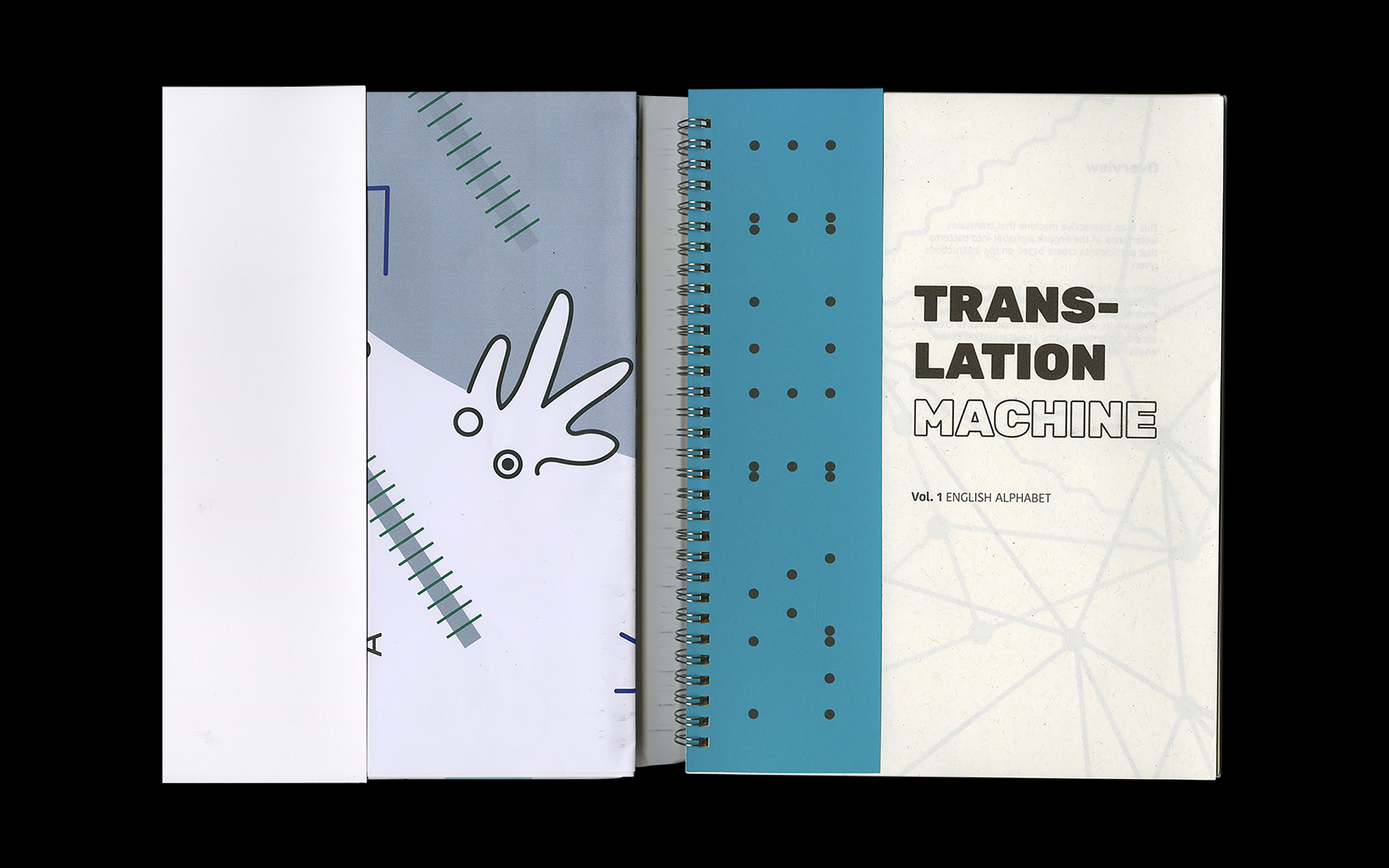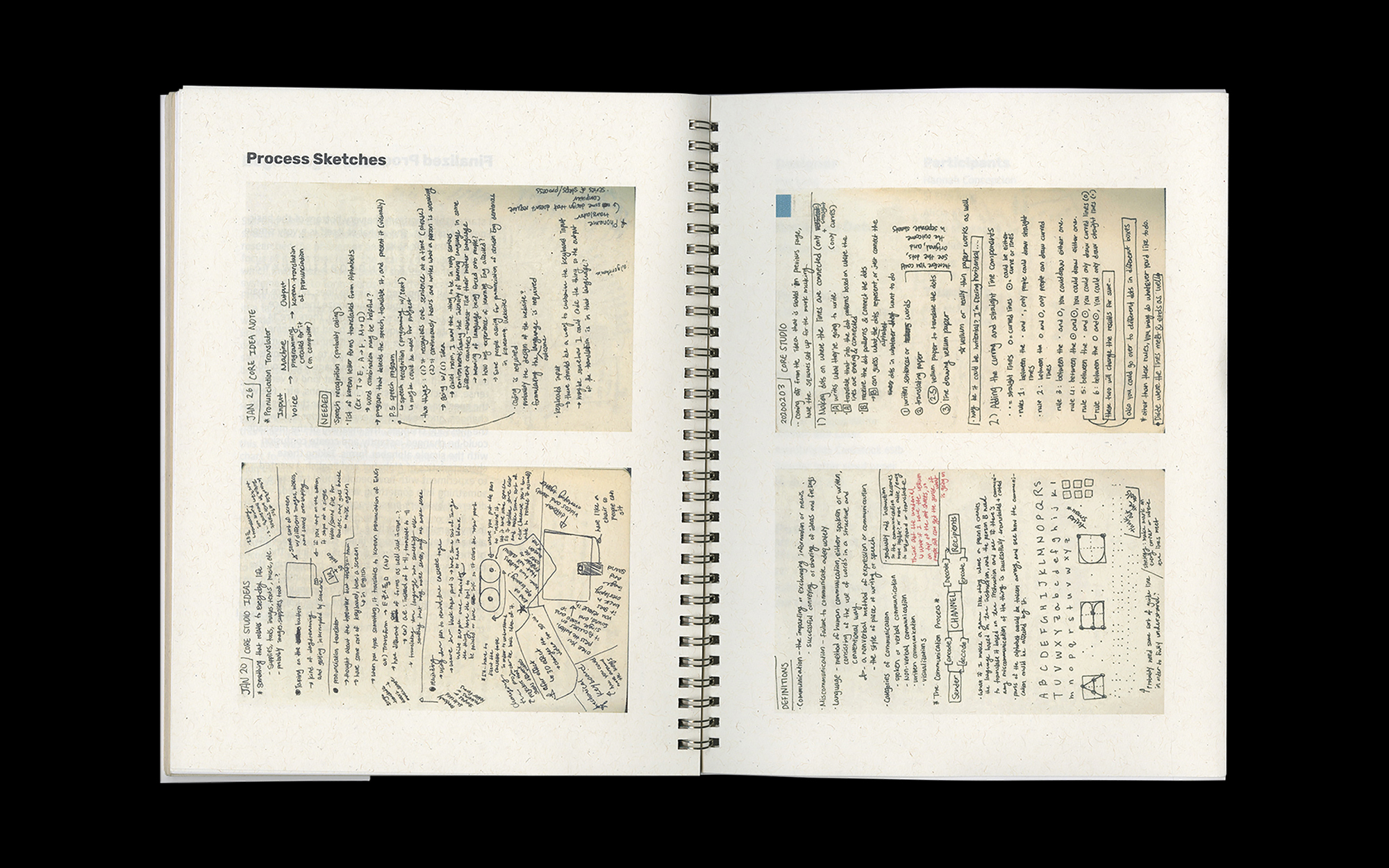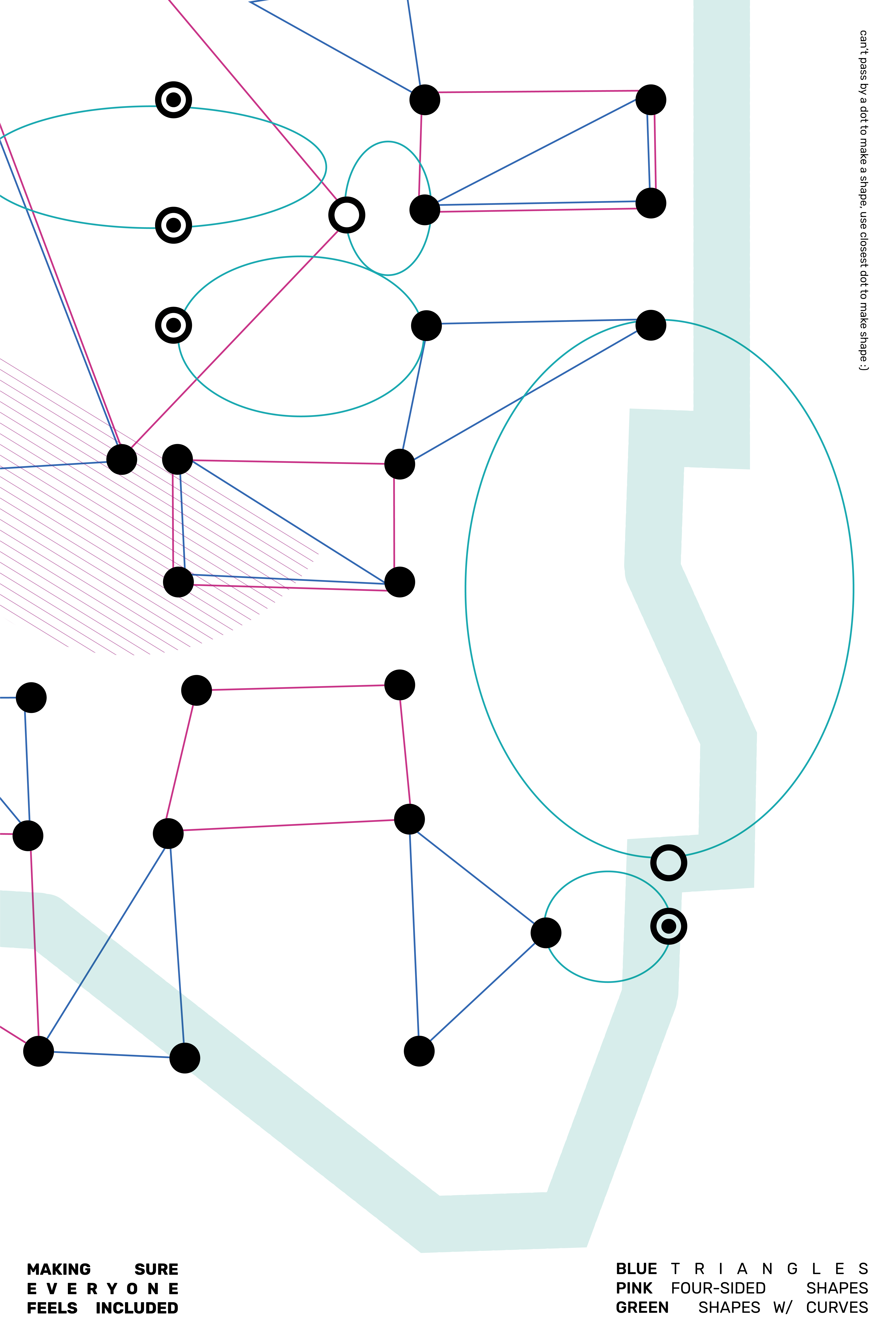













The Roman alphabet is formed with lines, curves, intersections, and ends. The combinations of these simple forms could be complicated to understand and miscommunicate the idea, message, and meaning. Interested in how the language - even within the same language - can be translated and interpreted differently, the designer questions how the core components of the language can translate the words and sentences into something else.
Based on the input and output system of translation, participants become the translating machine to disassemble the core components of Roman alphabets and translate them into the new form. Translation Machine Vol.1 provides few rules for the participants to follow.
Based on the input and output system of translation, participants become the translating machine to disassemble the core components of Roman alphabets and translate them into the new form. Translation Machine Vol.1 provides few rules for the participants to follow.
로마자는 선, 곡선, 교차점과 끝으로 이루어져 있다. 이렇게 간단한 형태들은 때론 쉽게 이해할 수 없거나, 전하고자 하는 아이디어, 메시지, 그리고 의미를 불분명하게 만들어 소통의 오류를 발생시킬 수 있다. 같은 언어와 말이라도 전혀 다른 것으로 해석될 수 있다는 가능성에 흥미를 느껴, 문자 체계의 핵심적인 요소들이 어떻게 단어와 문장을 전혀 다른 것으로 뒤바꿀 수 있는가에 대한 질문을 가졌다.
변형/번역의 입력 및 출력 시스템을 바탕으로, 참여자들은 변형 기계 그 자체가 되어 로마자의 핵심 요소들을 분해하고 새로이 번역해낸다. Translation Machine Vol. 1은 참여자들이 따라야 하는 규칙을 제시한다.
변형/번역의 입력 및 출력 시스템을 바탕으로, 참여자들은 변형 기계 그 자체가 되어 로마자의 핵심 요소들을 분해하고 새로이 번역해낸다. Translation Machine Vol. 1은 참여자들이 따라야 하는 규칙을 제시한다.